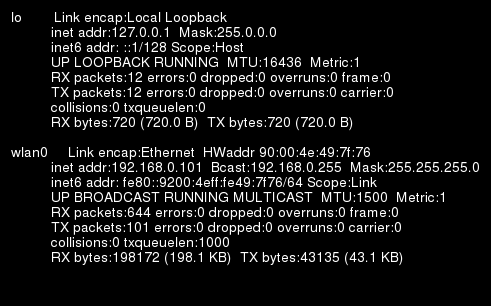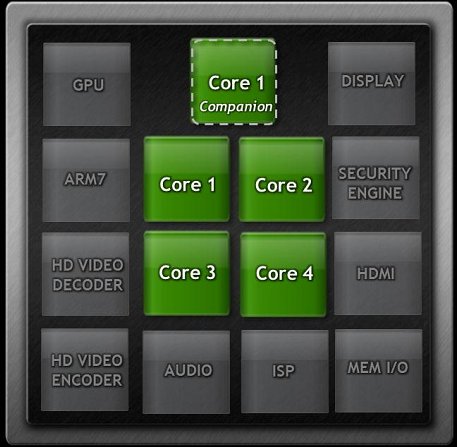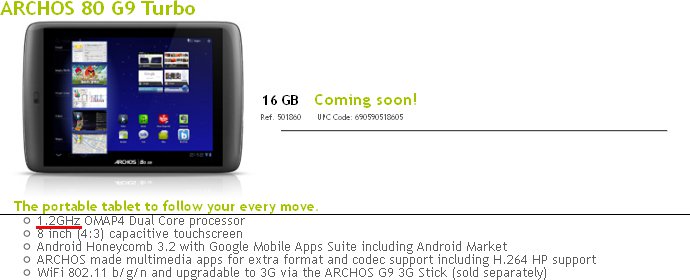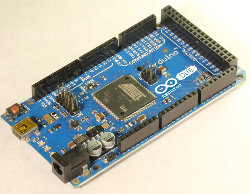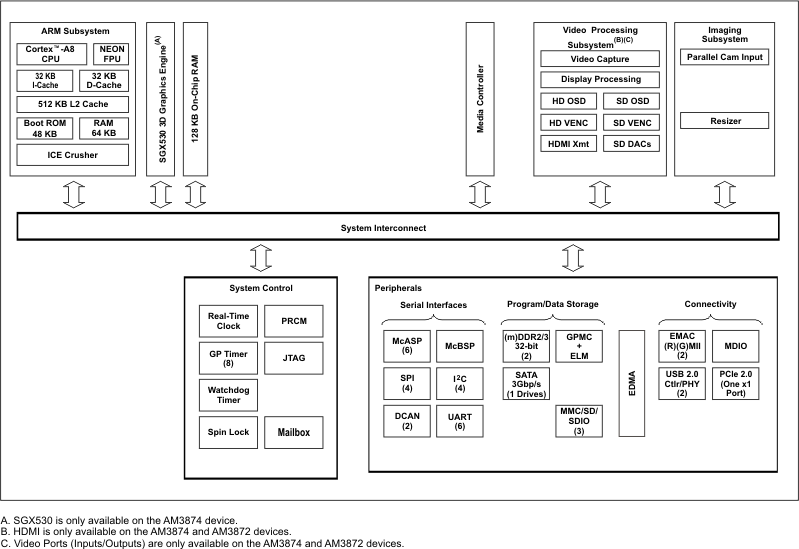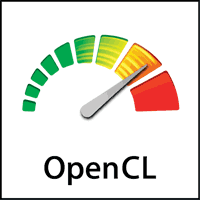Here’s a technique to convert a command line result into an image in Linux using ImageMagick. You could also do a screenshot (with PrtSrc key) and use Gimp to trim the image, but this method is faster and does not require a graphical interface. The simplest command to convert the result of ifconfig into an image: ifconfig | convert label:@- cmd.png This will give an image with a white background and black text, but If you want to have a black background with white text you can use the following: ifconfig | convert -background black -fill white \ label:@- cmd.png If you want to change the font and the font size: ifconfig | convert -background black -fill white \ -font Helvetica -pointsize 14 \ label:@- cmd.png You can retrieve the list of fonts with this command: convert -list font | grep Font: Finally, use this command to add an extra […]
Select an ARM MCU during Development with Atollic TrueSTUDIO for ARM
Atollic has released the latest version of TrueSTUDIO development tool for ARM, a C/C++ development tool for embedded developer that looks similar to Eclipse. It supports micro-controllers from a number of semiconductor manufacturers, making it possible to switch MCU supplier during the design process. This release of TrueSTUDIO supports several ARM MCU cores such as ARM7, ARM9, Cortex-M0, Cortex-M1, Cortex-M3 and Cortex-M4 processors. It also includes device-specific support for an extensive list of ARM processor-based micro-controller families, including: Atmel AT91SAM, EnergyMicro EFM32, Freescale Kinetis, Fujitsu FM3, STMicroelectronics STM32, Texas Instruments Stellaris and Toshiba TX. As well as an optimizing C/C++ compiler and a multiprocessor-aware debugger, the tool also has serial wire viewer tracing, graphical UML diagram editors for model-based design and architecture, performs code-quality analysis via TrueINSPECTOR and TrueANALYSER and features a test-automation toolbox (TureVERIFIER). There is also an ECLIPSE-based IDE with editor, x86 C/C++ build and debug tools for development of […]
OMG! Quad Core Nvidia Tegra 3 Has Actually 5 Cores
We’ve been deceived ! All along we thought the new quad-core Nvidia Tegra 3 (codename Kal-El) would just have 4 cores…right… But Nvidia has just posted a blog entry talking about a mysterious fifth core. There is also the 12-core GPU, but we already knew about that. Here’s what Nvidia has to say about the fifth core: This extra core – which we call the “companion core” – runs at a lower frequency and operates at exceptionally low power. During less power-hungry tasks like web reading, music playback and video playback, Kal-El completely powers down its four performance-tuned cores and instead uses its fifth companion core. For higher performance tasks, Kal-El disables its companion core and turns on its four performance cores, one at a time, as the work load increases. The Variable SMP architecture is also completely OS transparent, which means that operating systems and applications don’t need to […]
Archos G9 Android 3.2 Tablets Are Now Officially Available
Archos announced that Archos G9 Tablets are now available. There is of course a caveat to this… Only Archos 80 G9 Tablet can be purchased on Archos Store (limited availability) for 299.99 USD, all other models show the dreaded icon “Coming Soon”. However, all Archos G9 models can be pre-ordered on Amazon France but they are not yet available on Amazon US. The other disappointment is that the Turbo versions appear to have been clocked down to 1.2 Ghz, whereas they were previously announced at 1.5 Ghz. Having said that, if you click on “Product Information” on Archos website, it still says “ARM dual-core CORTEX A9 OMAP™ 4 up to 1.5 GHz”. There is also still a lot of confusion about the amount of RAM in the device 512 MB or 1 GB as this is not shown in the specifications. That’s quite a mess, it’s confusing and somewhat frustrating. […]
Emulate Gumstix Overo COM with Qemu and Linaro Nano Image
Overa COMs are low cost computer-on-modules (COM) built around OMAP3503 and OMAP3530 depending on the model. Such device can be purchased on gumstix website. However if you just want to try a program on the board, you could use QEMU to emulate the Overo board as follows: Download pre-built image. (nano is a minimal linux ditribution without UI): wget http://releases.linaro.org/images/linaro-n/nano/11.07/overo-nano.img.gz gunzip overo-nano.img.gz Install the qemu tools: sudo add-apt-repository ppa:linaro-maintainers/tools sudo apt-get update sudo apt-get install qemu-user-static qemu-system Run the image: qemu-system-arm -M overo -clock unix -serial stdio -device usb-kbd -drive file=/tmp/overo-nano.img,if=sd,cache=writeback You can also watch the installation in the video below: Source: https://wiki.linaro.org/Resources/HowTo/Qemu-5
First ARM-Based Arduino Board with Atmel SAM3U
Arduino announced Arduino Due board with a 32bit Cortex-M3 ARM processor on their blog before Maker Faire. The SAM3U processor from ATMEL runs at 96MHz with 256Kb of Flash, 50Kb of SRAM, 5 SPI buses, 2 I2C interfaces, 5 UARTS, 16 Analog Inputs at 12Bit resolution and more. Contrary to previous hardware release, they intend to open the process to the community early on and they plan to to be demo the board and give away some boards to a selected group of developers who will be invited to shape the platform while it’s been created. After Maker Faire, a small batch of Developer Edition boards on the Arduino store will be sold to members of the community who want to join the development effort. The final board will be released by the end of 2011. If you can’t wait there are some other Arduino-like projects with Cortex-M3 support based […]
Texas Instruments AM387X Sitara ARM Cortex A8 Microprocessors
Texas Instruments (TI) has introduced three new AM387x ARM Cortex-A8 microprocessors (MPUs): AM3871, AM3872 and AM3874. TI says these MPUs offer integration of the ARM Cortex-A8 core, peripherals for high-bandwidth connectivity (SATA, D-CAN, PCI Express (PCIe), Gigabit Ethernet switch and more), 3D graphics for enhanced GUIs and display subsystems for camera connectivity and viewing. The AM387x ARM Cortex-A8 MPU can connect to and control IP and CAN networks, HD displays, keyboard, mouse, PC, SD card and various general purpose peripherals, all via one highly integrated processor in an industrial automation application controlling a production line and a high-speed, shared data bus allows for reduced communication overhead and quick access to shared data, which results in reduced chip count, discrete memory costs and printed circuit board (PCB) space compared to separate solutions. Those MPUs are targeted at a variety of fanless applications such as: single board computing, network and communications processing, […]
OpenCL (Open Computing Language) Overview and SDKs
OpenCL (Open Computing Language) is a multi-vendor open standard for general-purpose parallel programming of heterogeneous systems that include CPUs, GPUs and other processors. OpenCL provides a uniform programming environment for software developers to write efficient, portable code for highperformance compute servers, desktop computer systems and handheld devices. OpenCL standard is managed and defined by the Khronos Group. The latest version (OpenCL 1.1) was ratified by the Khronos Group on the 14th of June 2010 and adds significant functionality for enhanced parallel programming flexibility, functionality and performance including: Host-thread safety, enabling OpenCL commands to be enqueued from multiple host threads. Sub-buffer objects to distribute regions of a buffer across multiple OpenCL devices. User events to enable enqueued OpenCL commands to wait on external events. Event callbacks that can be used to enqueue new OpenCL commands based on event state changes in a non-blocking manner. 3-component vector data types. Global work-offset which […]


